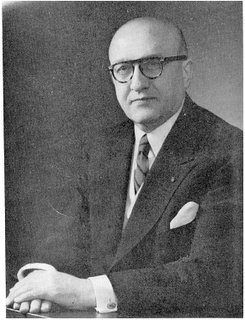Related Topics
Particular Sights to See:Center City
Taxi drivers tell tourists that Center City is a "shining city on a hill". During the Industrial Era, the city almost urbanized out to the county line, and then retreated. Right now, the urban center is surrounded by a semi-deserted ring of former factories.
Academia in the Philadelphia Region
Higher education is a source of pride, progress, and aggravation.
Conventions and Convention Centers
When you have a big convention center, some circus is always coming to town. Philadelphia has always been a convention town, has had and still has lots of convention sites, and hopes to have more of the kind of famous convention we have had in the past.
Touring Philadelphia's Western Regions
Philadelpia County had two hundred farms in 1950, but is now thickly settled in all directions. Western regions along the Schuylkill are still spread out somewhat; with many historic estates.
The Main Line
Like all cities, Philadelphia is filling in and choking up with subdivisions and development, in all directions from the center. The last place to fill up is the Welsh Barony, a tip of which can be said to extend all the way in town to the Art Museum.
Sugarloaf

|
| Germantown Map |
Germantown Avenue goes continuously uphill from its start at the Philadelphia waterfront until it reaches Sugarloaf in Chestnut Hill. It follows an old Indian Trail, and that's where the Indians apparently wanted to go. From Sugarloaf northward, it's all downhill.
The name derives from the shape of the hill at that point and is a fanciful description of the sudden shift from Wissahickon gorge to the Whitemarsh Valley, which occurs at that point. The underlying rock changes from hard "gneiss" to limestone. In early times, this was the location of the farm of William D.Stroud, whose son was Teddy Roosevelt's doctor and the first one to introduce the electrocardiogram to this country. Around 1928, James Page built an imposing mansion with a wrap-around porch at the top of the 40-acre estate, naming it Wycliffe. Around twenty years later, the real estate magnate Albert M. Greenfield acquired the property, which eventually was given to Temple University as a conference center, although a fire destroyed the wrap-around building. That's Sugarloaf, and you can visit it.
Two stories about Greenfield, himself, still circulate around town. The first concerns a banker who met Greenfield at the corner of 15th and Walnut Streets.

|
| Albert Greenfield |
The real estate man was looking up at the massive old Drexel building, where Anthony Drexel and J.P.Morgan were partners, and where Edward T. Stotesbury made lots of waves during the 1920s. Stotesbury acquired a personal wealth of about $100 million as "the richest Morgan partner" and was determined to spend every penny of it before he died in 1938. The stories of the extravagance of this birthright Quaker, and particularly his wife, are legendary. Anyway, Stotesbury held court at a big desk, just inside the door at 15th and Walnut. Greenfield was standing outside that door, chatting with his banker friend.
"Do you remember that big desk where Stotesbury used to sit?" Yes. "Well, I used to sell newspapers at the corner here and watched Stotesbury go in and out. I want you to know I just bought that building, myself, and I'm going to put my desk right where Stotesbury used to sit."
Unfortunately, he never did. Within two months, he was dead of pancreatic cancer.
The other story was told of Greenfield's integrity, the sort of thing that was central to the long-standing success of Philadelphia businessmen in commerce and banking. When bargains are stuck in a conversation, the deal is sealed with a handshake, and you better be as good as your word.
Hubert Horan, the Chairman of the Broad Street Trust, was interested in a piece of property, and over lunch agreed to pay Greenfield three million dollars for it. Before any papers were signed, another man came rushing into Greenfield's office and excitedly announced he wanted to buy the property. "I'm sorry," said Greenfield, "I just sold it to Hubert Horan". How much? "He agreed to pay three million for it." Did you sign anything? "No." Fine, I'm willing to pay you FOUR million for it."
"Well," said Greenfield, "I suggest you go see Hubert Horan. He owns it."
Originally published: Monday, June 26, 2006; most-recently modified: Wednesday, June 05, 2019
| Posted by: Barbara | Jan 4, 2017 8:28 PM |
| Posted by: jim | Oct 4, 2014 4:07 AM |
| Posted by: ursula | Dec 19, 2012 9:51 AM |
You probably know that I'm working on a biography of Albert M. Greenfield. So I too am curious to know about the origins of the Hubert Horan story.
Also curious about where you got the story about the Drexel Building at 15th & Walnut, which doesn't sound right at all. That building didn't open until 1927, and Drexel & Co. moved out in 1942. Greenfield bought it in 1956 but never moved in there. And he lived until 1967.
Best regards,
Dan
| Posted by: Dan Rottenberg | Jun 2, 2012 8:58 AM |
| Posted by: Geo. Fisher | Apr 8, 2009 7:19 PM |
| Posted by: Ellen Horan | Apr 8, 2009 9:04 AM |